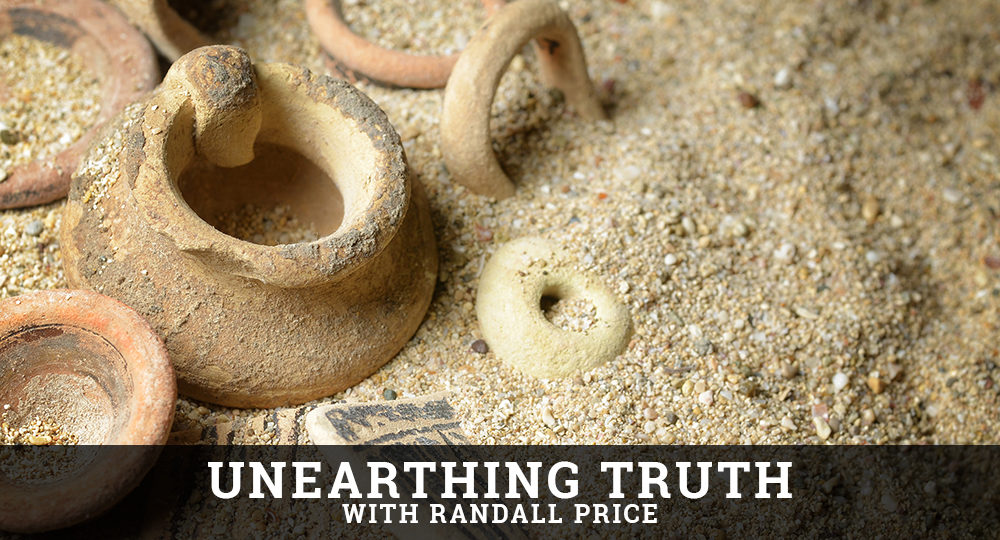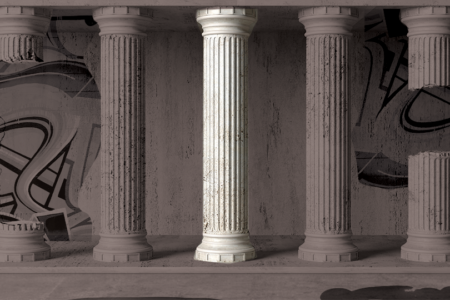The Tabernacle in Shiloh
In Shiloh, in the hill country of Ephraim, Joshua set up the Tabernacle (Josh. 18:1) and allotted land to the tribes of Israel (v. 10). Eli the high priest ministered in Shiloh, and the prophet Samuel grew up there (1 Sam. 1:1–28). Because the Shekinah Glory (God’s physical presence) resided at the Tabernacle, the Israelites assembled there annually for the pilgrim feasts (v. 3), making Shiloh Israel’s religious capital during the Judges period (Judg. 21:19).
Since the Tabernacle was used continually in Shiloh for more than 300 years, the former mobile tent structure became obsolete. Arranged as a compound within an enclosure of fieldstones, the Tabernacle had a doorpost (1 Sam. 1:9) and doors (3:15). The Hebrew word for “the Tabernacle of the LORD” (1:9), heycal, refers to a permanent structure. Medieval rabbinic scholar Maimonides concurred: “They came to Shiloh, built a house of stone, and spread the curtains of the Sanctuary over it.”1 The term for “tent” is not used again for the Tabernacle until 2 Samuel 7, long after its removal from Shiloh and installation at Kirjath Jearim (1 Sam. 4—7).
In 1873, archaeologists identified a level, rectangular court on the northern side of the Shiloh site, surrounded by a large wall of fieldstones. Measuring 400 feet long and 77 feet wide with a subdivided area, it was the only level area on the summit with sufficient space and configuration to house the Tabernacle.
From 2010 to 2012, Israeli archaeologist Hananya Hizmi conducted excavations there, which revealed carved holes along the sides of the enclosure that could have supported wooden poles like the doorpost mentioned in 1 Samuel 1:9.2 Next to these hewn holes were structures dating between the Israelite conquest and monarchy. Three large stoves with commercial pottery vessels imply this was a central public facility. Nearby bones and pottery dated to the biblical period gave evidence they were associated with sacrificial remains. Moreover, remains from the southwestern corner of the wall indicated the ancient city’s entrance gate was near.
Scholars believe the Philistines destroyed Shiloh, including the Tabernacle site, after the battle of Ebenezer (chap. 4) because the captured Ark of the Covenant was not returned to Shiloh but to Kirjath Jearim (6:1, 21). The prophet Jeremiah later referenced the remains of the Tabernacle: “Go now to My place which was in Shiloh, where I set My name at the first, and see what I did to it because of the wickedness of My people Israel” (Jer. 7:12).
Excavations at Shiloh uncovered a destruction layer dating to the 11th century BC, corresponding to this pivotal event. An Iron Age I, two-story Israelite public building contained remains of cultic objects, suggesting the Israelites adopted earlier Canaanite practices.
Beginning in 2017, an Associates for Biblical Research team renewed excavations and discovered a Late Bronze/Iron Age I monumental building that matches the Tabernacle’s time frame and dimensions (Ex. 26). Its walls survived to a height of six feet, and the building is divided into two rooms on a 2:1 ratio, like the Tabernacle’s holy place and holy of holies.3
In an adjacent building, the team found small ceramic pomegranates nearly identical to one found at Jokneam, a Levitical city in the Jezreel Valley (Josh. 21:34). The archaeologists also unearthed three horns from an altar and, to the north, storage rooms with large jars.4 On the site’s eastern perimeter, they found a Late Bronze (Joshua’s era) favissa (cultic burial pit) containing thousands of kosher bones from young animals, interspersed with pottery and offerings. Finally, northwest of the building lies the city’s proposed gate complex.5
These preliminary finds harmonize with the biblical location and description of the Tabernacle at Shiloh, affirming the trustworthiness of God’s Word.
ENDNOTES
-
-
- Maimonides, Mishneh Torah, The Chosen Temple, 1.11–12.
- Pekka Pitkänen, Central Sanctuary and Centralization of Worship in Ancient Israel: From the Settlement to the Building of Solomon’s Temple (Piscataway, NJ: Gorgias, 2004), 140–44.
- Scott Stripling, personal communication, May 10, 2024.
- Bryan Windle, biblearchaeologyreport.com (July 20, 2023), 6.
- Abigail Leavitt, “Shiloh Week 2, 2023” (tinyurl.com/ShilohGate).
-








